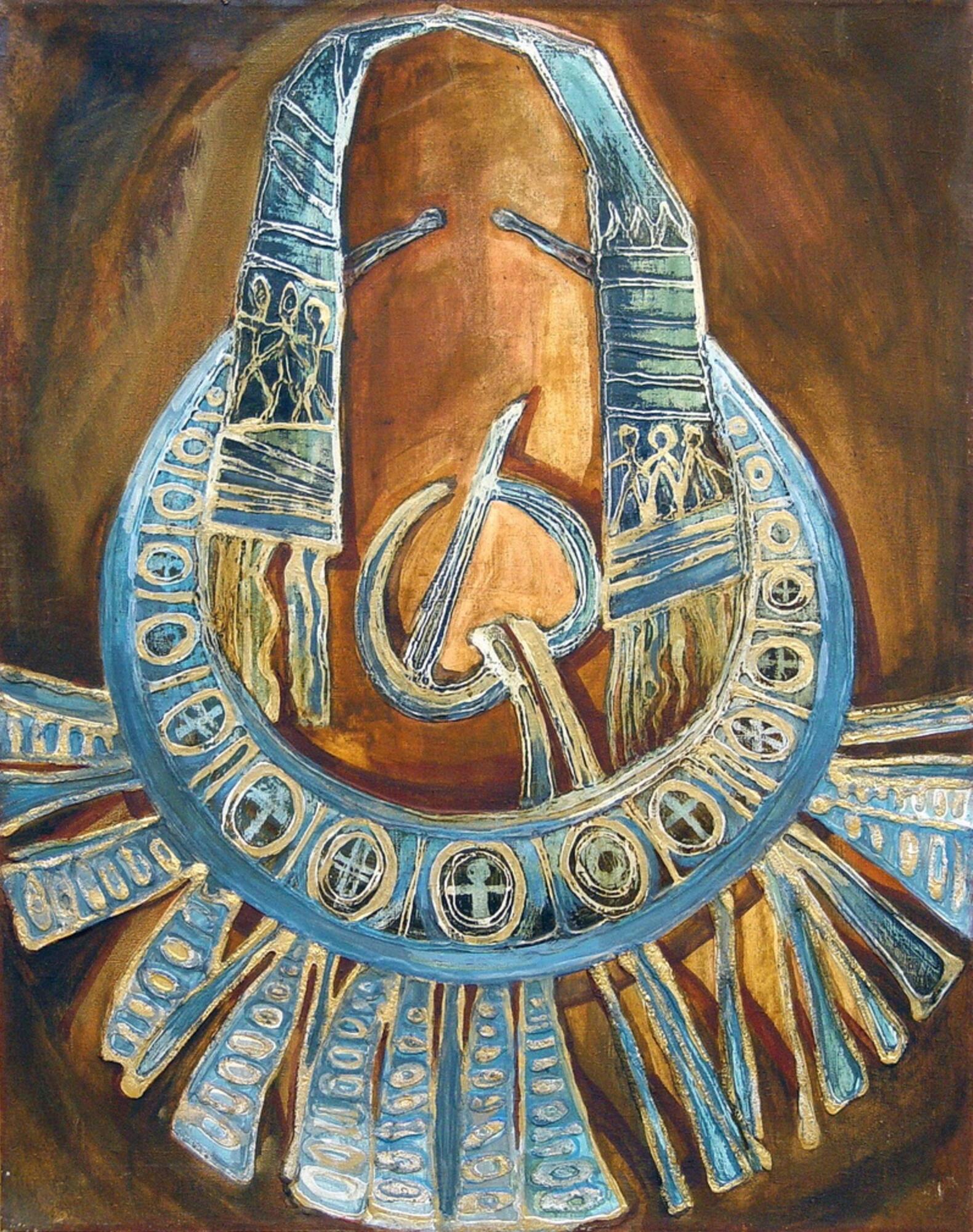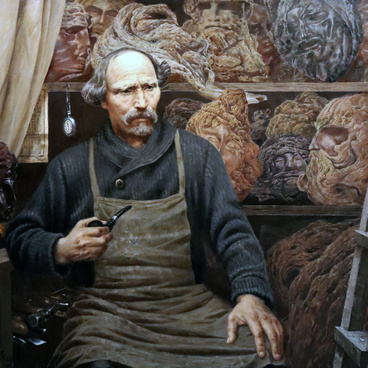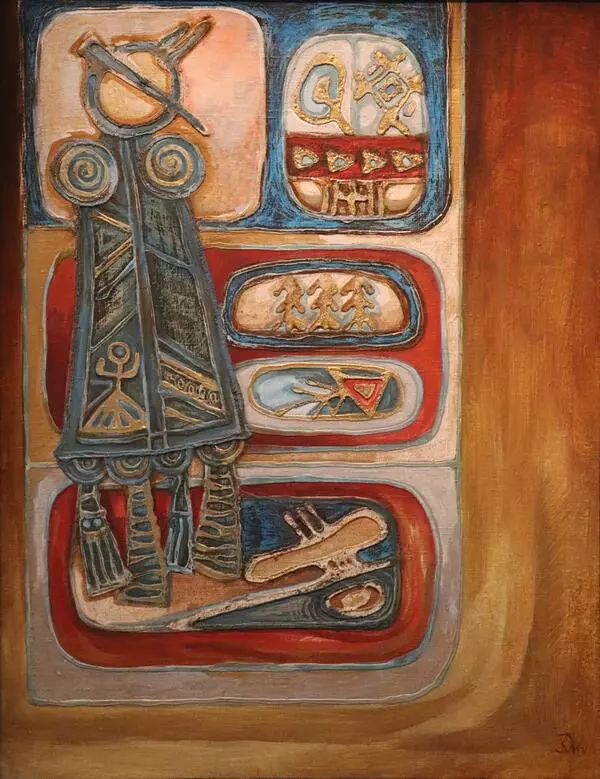Lyudmila Kolchanova-Narbekova’s designer painting sheds a new light on the theme of culture and traditions of the Mordovian peoples. A fashion designer and painter, graphic artist and teacher, Lyudmila Nikolaevna has been heading the Union of Artists of the Republic of Mordovia since 2017 and teaching at the Department of Design and Advertising of the Institute of National Culture of the Ogarev Mordovia State University. Lecturing in painting and decorative and applied arts allowed the artist to develop a profound understanding of the origins of ethnic identity and convey them in modern decorative forms.
In the canvas, which comprises the central part of the triptych “Jewelry of the Mordva People of the Middle Tsna Area”, Lyudmila Kolchanova-Narbekova explores the culture of a separate group of the Mordovian people. This group was named after its traditional residential area — the middle course of the Tsna River, which flows on the territory of present-day Tambov Oblast.
The central part of the triptych depicts an image of a jewelry piece that was worn around the neck (a crescent-shaped torc) with rectangular charms. In the center, on a lighter background, there is a golden-blue brooch-clasp “syulgam” which was used to fasten the shirt collar.
A decorative shoulder piece with fringe is suspended from both sides. It features an ornament of rhythmically repeating stripes and schematic human figures. This type of décor, which uses images of female or male stylized figures, is called anthropomorphic. The emergence of this ornament is associated with ancient rituals.
All parts of the triptych unite into one single painting which emphasizes how integral the system of traditional representations of the Mordvins was. In this part, Lyudmila Kolchanova-Narbekova depicts necklaces, which are known to the modern generation from archaeological finds of the 5th–14th centuries.
For the Mordvins, jewelry had not only an aesthetic, but also a ritual significance: it protected from evil spirits. It is no coincidence that notches in the form of simple geometric patterns can be often seen on jewelry, as they are ancient symbols of higher powers. The colors of the painting are also symbolic: blue is the color of water and the goddess Vedyava and brown is the color of earth and the goddess Norovava.
In the canvas, which comprises the central part of the triptych “Jewelry of the Mordva People of the Middle Tsna Area”, Lyudmila Kolchanova-Narbekova explores the culture of a separate group of the Mordovian people. This group was named after its traditional residential area — the middle course of the Tsna River, which flows on the territory of present-day Tambov Oblast.
The central part of the triptych depicts an image of a jewelry piece that was worn around the neck (a crescent-shaped torc) with rectangular charms. In the center, on a lighter background, there is a golden-blue brooch-clasp “syulgam” which was used to fasten the shirt collar.
A decorative shoulder piece with fringe is suspended from both sides. It features an ornament of rhythmically repeating stripes and schematic human figures. This type of décor, which uses images of female or male stylized figures, is called anthropomorphic. The emergence of this ornament is associated with ancient rituals.
All parts of the triptych unite into one single painting which emphasizes how integral the system of traditional representations of the Mordvins was. In this part, Lyudmila Kolchanova-Narbekova depicts necklaces, which are known to the modern generation from archaeological finds of the 5th–14th centuries.
For the Mordvins, jewelry had not only an aesthetic, but also a ritual significance: it protected from evil spirits. It is no coincidence that notches in the form of simple geometric patterns can be often seen on jewelry, as they are ancient symbols of higher powers. The colors of the painting are also symbolic: blue is the color of water and the goddess Vedyava and brown is the color of earth and the goddess Norovava.





